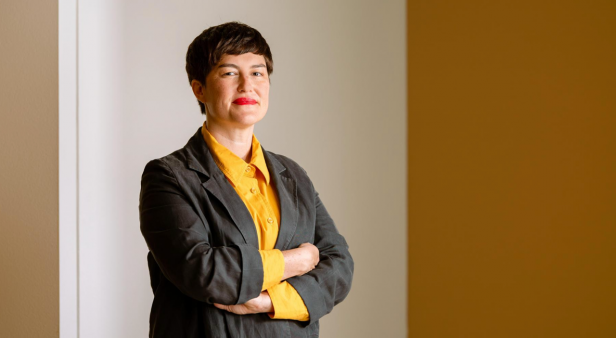For some, ‘abstract’ art is a challenging concept to get their head around, particularly when its practitioners revel in obfuscation, codification, and reduction. What are the defining characteristics that make a piece of art identifiably abstract?
This exhibition is about how there is no one distinctive definition of abstract art. Art, life and ideas become abstracted in different ways. Hossein Valamanesh AM and Constanze Zikos revel in the patterns and ornamentation of Persian and Greek architecture. John Spiteri and Jemima Wyman’s artworks show how the distinction between figuration and abstraction is a blurry one – visitors might be surprised how many bodies peak out of artworks throughout the exhibition. Meanwhile, Daniel Boyd partially covers archival images to reflect the blinders through which we view history and Helen Johnson densely layers images as a metaphor for the entanglement of history.
Historically speaking, what has abstraction allowed artists to communicate and achieve compared to other creative practices?
At times abstraction has been a vehicle to highlight ideas that might be hard to describe in language – for instance how do we talk about the idea of a void without filling that space with descriptions (which sort of defeats the idea!). On the other hand, obfuscation has been used by Indigenous Australian artists to create artworks that are memory prompts for the initiated, while at the same time keeping sacred information hidden from broader audiences.
We’d love to know more about your avenues of thought when preparing Living Patterns: Contemporary Australian Abstraction. What was the starting point when curating an exhibition dedicated to abstraction?
My projects always stem from my conversations with artists, and Living Patterns is no different. During studio visits I was struck by how often conversations would focus on obfuscation, codification, and reduction. With artists describing how they were turning away from figuration, since it is burdened by histories that the artists were trying to break free from. Again and again, the practitioners I spoke to expressed how much they were enjoying the freedom that abstraction afforded them.
Were there any initial ideas that you used as a thematic guideline?
I was interested in how abstraction was not divorced from life. Artists use it to hint at ideas of the body and gender without being tied to binary representations. Another reoccurring motif in the show is the idea of labour – artists such as Margaret Rarru and Teelah George use physically onerous techniques to create their magnificent artworks, while artists such as Emily Floyd and Daniel Boyd reference the way that labour can become abstracted when people or types of jobs are not valued.
Looking at the endeavour broadly, is there any statement in particular you have sought to capture with Living Patterns?
There is a wonderful quote from the Martinique philosopher and poet Édouard Glissant’s book Poetics of Relation: As far as I’m concerned, a person has the right to be opaque. That doesn’t stop me from liking that person, it doesn’t stop me from working with him, hanging out with him, etc. A racist is someone who refuses what he doesn’t understand. I can accept what I don’t understand.
While themes bleed into one another across the exhibition, what do you think Living Patterns reveals about our current moment?
I think there is a subtle push back against the relentlessness of images of the self and performative politics on social media. There is also a desire by artists to spend time on subtleties and nuance, in contrast to the superficiality of public discourse that plagues current political debates.
Living Patterns looks primarily at Australian-made abstract art, with 35 contemporary Australian artists showcased. What would you say is distinct about Australian abstract art?
The distinctive conversations that we have in Australia about abstract art due to the unique history of Indigenous Australian art was the reason that I wanted to curate this exhibition. While some people might think of abstract art as empty of content, here in Australia we understand that abstract art can be rich with references and meaning.
There seems to be a sense of provocation infused into Living Patterns – are there any conversations you hope this exhibition raises in relation to contemporary abstract art and its role as an expressive device?
The more time you put into the artworks on display the more that you will get out of them, as the subtleties and nuances slowly reveal themselves. I hope this is an approach that visitors can take with them into other parts of their lives.
Living Patterns: Contemporary Australian Abstraction is running at Queensland Art Gallery until Sunday February 11, 2024.
